D-LINK DSR-500AC
₫7.558.000
Mô tả D-Link DSR-500AC:
Router D-Link 4-port Gigabit LAN, 2-port Gigabit WAN, 1-port USB 2.0, Wireless AC Dual-band Selectable Dual-Wan VPN Service Router (VPN:200Mbps / Firewall: 950Mbps / Firewall Policies: 600 / Concurrent Sessions: 50,000)
The D-Link DSR Series Unified Services Routers provide secure, high-performance networking solutions to address the growing needs of small and medium businesses. With integrated high-speed wireless technology, the DSR series routers offer comparable performance to wired networks, but with fewer limitations. Next generation wireless performance is available on the DSR-500AC and DSR-1000AC, which introduces 802.11ac support to the family. Available on the 5 GHz band, the combination of wider Radio Frequency bandwidths take data rates available to clients supporting the wireless AC standard to the next level.
Comprehensive Management Capabilities
The DSR-500/500AC and DSR-1000/1000AC Unified Services Routers include dual WAN Gigabit Ethernet ports to provide high availability for your WAN or Internet connections. Traffic can be load-balanced across the links with Outbound Load Balancing, increasing the performance and availability of business applications. The secondary WAN port can also be used to create a DMZ, isolating servers from your LAN. The DSR series supports mobile broadband networks via an extendable USB modem*, such as 3G or 4G** dongles. Traffic load balancing can be performed on the mobile data connections, providing an additional layer of redundancy for critical or backup applications.
Web Authentication Capabilities
Captive Portal allows employees and guest users to be easily authenticated and authorized by accessing a customized landing page. Users can be authenticated by a local database, RADIUS, LDAP, Microsoft Windows Active Directory, NT Domain and POP3 server. A maximum of four servers can be configured at any one time.
Complete and Robust VPN Features Web Content Filtering
A fully featured virtual private network (VPN) provides your mobile workers The DSR series also and branch offices with a secure link to your network. The DSR series routers administrators are capable of Generic web content filtering Routing Encapsulation (GRE) tunnels, empowering your mobile users by ActiveX, and cookies, or to providing remote access to a central corporate database. Site-to-site VPN filtering, which tunnels use IP Security (IPSec) Protocol, Point-to-Point Tunneling Protocol content from a list (PPTP), or Layer 2 Tunneling Protocol (L2TP) to facilitate branch office URLs and real-time connectivity through encrypted virtual links.
Web Content Filtering
The DSR series also provides a web content filtering feature to help administrators monitor, manage and control employees’ Internet usage. Static web content filtering helps to remove malicious objects such as Java applets, ActiveX, and cookies, or to block URLs by keyword. Dynamic web content filtering, which requires a license subscription, allows administrators to filter content from a list of categories. Multiple global index servers, with millions of URLs and real-time website data, enhance performance and maximize service availability.
Ethernet Interface
• 2 10/100/1000 Mbps WAN Ports
• 4 10/100/1000 Mbps LAN Port
Wireless Interface
• 802.11 ac/a/b/g/n (Selectable dual band)
• 2 Detachable 2 dBi Omni-Directional Antennas
USB 2.0
• 1 USB 2.0 port
Console port
• RJ-45
Performance***
Firewall Throughput****
• 950 Mbps
VPN Throughput*****
• 200 Mbps
Concurrent Sessions
• 50 000
New Sessions (per second)
• 500
Firewall Policies
• 600
Internet Connection Type
• Static/Dynamic IP
• PPPoE/L2TP/PPTP
• Multiple PPPoE
Firewall System
• Static Route
• Dynamic Route: RIP v1/v2, OSPF, OSPFv3
• Dynamic DNS
• Inter-VLAN Route
• NAT, PAT
• Web Content Filtering: Static URL, Keywords, Dynamic WCF (License is required)
• Intrusion Prevention System (IPS): Signature Package Included in Firmware
• Authentication: Internal User Database, Radius, POP3, LDAP, AD, NT Domain
Networking
• DHCP Server/Client
• DHCP Relay
• IEEE 802.11q VLAN
• VLAN (port-based)
• IP Multicast: IGMP Proxy, IGMP Snooping
• IPv6
• Route Failover
• Outbound Load Balancing
• 3G/4G** Redundancy
Virtual Private Network (VPN)
• VPN Tunnels: 95
• IPSec Tunnels: 35
• PPTP/L2TP Tunnels: 25
• GRE Tunnels: 15
• Encryption Methods: DES, NULL
• IPSec/PPTP/L2TP Server
• IPSec NAT Trraversal
• Dead Peer Detection
• IP Encapsulating Security Payload (ESP)
• IP Authentication Header (AH)
• VPN Tunnel Keep Alive
• Hub and Spoke
Bandwidth Management
• Maximum Bandwidth Control
• Priority Bandwidth Control:
– Port-based QoS
– 3 Classes
System Management
• Web-based User Interface
• Command Line
• SNMP v1, v2c, v3
Wireless
Security
• Wired Equivalent Privacy (WEP)
• Wi-Fi Protected Setup (WPS)
• Wi-Fi Protected Access – Personal (WPA-PSK)
• Wi-Fi Protected Access – Enterprise (WPA-EAP)
• Wi-Fi Protected Access верÑÐ¸Ñ 2 – Personal (WPA-PSK)
• Wi-Fi Protected Access верÑÐ¸Ñ 2 – Enterprise (WPA-EAP)
• Multiple Service Set Identifier (SSID)
• Service Set Identifier (SSID) to VLAN Mapping
Wireless Frequency
• 802.11b/g/n: 24 GHz to 2.483 GHz
• 802.11a/n/ac: 5.18 GHz to 5.825 GHz
Wireless speed
• IEEE 802.11a: 6, 9, 12, 18, 24, 36, 48 and 54 Mbit/s
• IEEE 802.11b: 1, 2, 5.5 and 11 Mbit/s
• IEEE 802.11g: 6, 9, 12, 18, 24, 36, 48 and 54 Mbit/s
• IEEE 802.11n (2.4 GHz): 6.5 ~ 300 Mbit/s
• IEEE 802.11n (5 GHz): 6.5 ~ 150 Mbit/s
• IEEE 802.11ac: 7.2 ~ 1300 Mbit/s
Transmitter Output Power******
• IEEE 802.11a:
14 dBm at 6~54 Mbit/s
• IEEE 802.11b:
28 dBm at 1~11 Mbit/s
• IEEE 802.11g:
11 dBm at 6~54 Mbit/s
• IEEE 802.11n:
10 dBm at 6~300 Mbit/s (2.4 GHz)
14 dBm at 6~150 Mbit/s (5 GHz)
• IEEE 802.11ac:
11 dBm at 7.2~1300 Mbit/s
Receiver Sensitivity
• IEEE 802.11a:
-82 dBm at 6 Mbit/s
-81 dBm at 9 Mbit/s
-79 dBm at 12 Mbit/s
-77 dBm at 18 Mbit/s
-74 dBm at 24 Mbit/s
-70 dBm at 36 Mbit/s
-66 dBm at 48 Mbit/s
-65 dBm at 54 Mbit/s
• IEEE 802.11b:
-89 dBm at 2 Mbit/s
-83 dBm at 11 Mbit/s
• IEEE 802.11g:
-82 dBm at 6 Mbit/s
-81 dBm at 9 Mbit/s
-79 dBm at 12 Mbit/s
-77 dBm at 18 Mbit/s
-74 dBm at 24 Mbit/s
-70 dBm at 36 Mbit/s
-66 dBm at 48 Mbit/s
-65 dBm at 54 Mbit/s
• IEEE 802.11n:
2.4 GHz/HT-20:
-82 dBm at MCS0/8/16
-79 dBm at MCS1/9/17
-77 dBm at MCS2/10/18
-74 dBm at MCS3/11/19
-70 dBm at MCS4/12/20
-66 dBm at MCS5/13/21
-65 dBm at MCS6/14/22
-64 dBm at MCS7/15/23
2.4 GHz/HT-40:
-79 dBm at MCS0/8/16
-76 dBm at MCS1/9/17
-74 dBm at MCS2/10/18
-71 dBm at MCS3/11/19
-67 dBm at MCS4/12/20
-63 dBm at MCS5/13/21
-62 dBm at MCS6/14/22
-61 dBm at MCS7/15/23
5 GHz/HT-20:
-82 dBm at MCS0
-79 dBm at MCS1
-77 dBm at MCS2
-74 dBm at MCS3
-70 dBm at MCS4
-66 dBm at MCS5
-65 dBm at MCS6
-64 dBm at MCS7
5 GHz/HT-40:
-79 dBm at MCS0
-76 dBm at MCS1
-74 dBm at MCS2
-71 dBm at MCS3
-67 dBm at MCS4
-63 dBm at MCS5
-62 dBm at MCS6
-61 dBm at MCS7
• IEEE 802.11ac:
VHT-20:
-82 dBm at MCS0
-79 dBm at MCS1
-77 dBm at MCS2
-74 dBm at MCS3
-70 dBm at MCS4
-66 dBm at MCS5
-65 dBm at MCS6
-64 dBm at MCS7
-59 dBm at MCS8
-57 dBm at MCS9
VHT-40:
-79 dBm at MCS0
-76 dBm at MCS1
-74 dBm at MCS2
-71 dBm at MCS3
-67 dBm at MCS4
-63 dBm at MCS5
-62 dBm at MCS6
-61 dBm at MCS7
-56 dBm at MCS8
-54 dBm at MCS9
VHT-80:
-76 dBm at MCS0
-73 dBm at MCS1
-71 dBm at MCS2
-68 dBm at MCS3
-64 dBm at MCS4
-60 dBm at MCS5
-59 dBm at MCS6
-58 dBm at MCS7
-53 dBm at MCS8
-51 dBm at MCS9
Physical Parameters
Power Supply
• External Power Supply Unit: DC 12 V/2.5 A
Max. Power Consumption
• 13.1 W
MTBF
• 360 000 hours
Dimensions
• 180 x 280 x 44 mm
Weight
• 1.728 kg with 2 antennas
Temperature
• Operating: 0 to 40°C
• Storage: -20 to 70°C
Humidity
• Operating: 5% to 95% non-condensing
Certifications EMI
• FCC Class B
• CE Class B
• RCM
• IC
Safety
• cUL
• LVD (EN60950-1)
3rd Party Certification
• IPv6 Ready
• Wi-Fi
• VPNC Basic Interop
| Model | DSR-500AC |
| Interfaces | |
| Ethernet | 2 x 10/100/1000 Mbps WAN Ports |
| 4 x 10/100/1000 Mbps LAN Ports | |
| Wireless | Selectable 802.11b/g/n or 802.11a/ac |
| 2 Detachable Omni-Directional Antennas | |
| USB 2.0 | 1 |
| Console | 1 RJ-45 |
| System performance | |
| Firewall Throughput | 950 Mbps |
| VPN Throughput | 200 Mbps |
| Concurrent Sessions | 50 |
| New Sessions (per second) | 500 |
| Firewall Policies | 600 |
| Internet | |
| Internet Connection Type | Static/ Dynamic IP |
| PPPoE/ L2TP/ PPTP | |
| Multiple PPPoE | |
| Firewall System | |
| Support | Static Route, Dynamic DNS, Inter-VLAN Route, NAT, PAT, Web Content Filtering, Intrusion Prevention systems (IPS) |
| Networking | |
| Support | DHCP Server/Client, DHCP Relay, IEEE 802.1q VLAN, VLAN (Port-Based), IP Multicast, IPv6, Route Failover |
| Wireless | |
| Standard | B/G/N/AC |
| Support | Multi SSID, SSID to VLAN Mapping |
| VPN | |
| Support | VPN, IPSec, SSL, PPTP/L2TP Clients, GRE |
| Encryption Methods | DES, 3DES, AES, Twofish, Blowfish, CAST-128, NULL |
| Bandwidth management | |
| Management | Max. Bandwidth Control Priority Bandwidth Control (Port-Based QoS, 3 Classes) |
| General | |
| Power Supply | 12VDC, 1.5A |
| Max. Power Consumption | 13.1W |
| Dimension | 180 x 280 x 44 mm |
| MÃ SP | MÔ TẢ |
| DGS-1100 Layer 2 Lite EasySmart Gigabit Switches | |
| DGS-1100-05 | 5-port UTP 10/100/1000Mbps EU 2-round pin Power Adapter (H/W : B1, Desktop) |
| DGS-1100-08 | 8-port UTP 10/100/1000Mbps EU 2-round pin Power Adapter (H/W : B1, Desktop) |
| DGS-1100-18 | 16-port UTP 10/100/1000Mbps, 2-port Gigabit SFP (EU 2 round pin+ UK 3-pin Power Cord, H/W : B2, Rackmountable) |
| DGS-1100-26 | 24-port UTP 10/100/1000Mbps, 2-port Gigabit SFP (EU 2 round pin+ UK 3-pin Power Cord, H/W : B2, Rackmountable) |
| Layer 2 Lite EasySmart Gigabit PoE Switches | |
| DGS-1100-08P | 8-port UTP 802.3af PoE & 802.3at PoE+ 10/100/1000Mbps (Port 1-8 Up to 30W per port, Power Budget : 64W, EU 2-round pin + UK 3-pin Power Cord, H/W : B1, Desktop) |
| DGS-1100-24P | 12-port UTP 802.af PoE & 802.3at PoE+ 10/100/1000Mbps, 12-port UTP 10/100/1000Mbps (Port 1-12 Up to 30W per port, Power Budget : 100W, EU 2 round pin+ UK 3-pin Power Cord, H/W : B2, Rackmountable) |
| DGS-1100-10MP | 8-port UTP 802.3af PoE & 802.3at PoE+ 10/100/1000Mbps, 2-port Gigabit SFP (Port 1-8 Up-to 30W, Power Budget : 130W, EU 2 round pin+ UK 3-pin Power Cord, H/W : B1, Rackmountable) |
| DGS-1100-10MPP | 8-port UTP 802.3af PoE, 802.3at PoE+, 802.3bt draft uPoE 10/100/1000Mbps, 2-port Gigabit SFP (Port 1-6 Up-to 30W, Port7-8 Up-to 75W, Power Budget : 242W, EU 2 round pin+ UK 3-pin Power Cord, H/W : B1, Rackmountable) |
| DGS-1100-26MP | 24-port UTP 802.3af PoE & 802.3at PoE+ 10/100/1000Mbps, 2-port UTP 10/100/1000Mbps / SFP Combo (Port 1-24 Up-to 30W, Power Budget : 370W, EU 2 round pin+ UK 3-pin Power Cord, H/W : B1, Rackmountable) |
| DGS-1100-26MPP | 24-port UTP 802.3af PoE, 802.3at PoE+, 802.3bt draft uPoE 10/100/1000Mbps, 2-port UTP 10/100/1000Mbps / SFP Combo (Port 1-20 Up-to 30W, Port 21-24 Up-to 75W, Power Budget : 518W, EU 2 round pin+ UK 3-pin Power Cord, H/W : B1, Rackmountable) |
| Layer 2 Lite 10 Gigabit Ethernet EasySmart Switches | |
| DXS-1100-10TS | 8-port UTP 10GBASE-T, 2-port 10G SFP+ (EU 2 round pin+ UK 3-pin Power Cord, H/W: A1, Rackmountable) |
| DXS-1100-16TC | 12-port UTP 10GBASE-T, 2-port 10G SFP+, 2-port UTP 10GBASE-T/10G SFP+ Combo (EU 2 round pin+ UK 3-pin Power Cord, H/W: A1, Rackmountable) |
| DXS-1100-16SC | 14-port 10G SFP+, 2-port UTP 10GBASE-T/10G SFP+ Combo (EU 2 round pin+ UK 3-pin Power Cord, H/W: A1, Rackmountable) |
| DGS-1210 Layer 2 Smart Managed Gigabit Switches | |
| DGS-1210-10 | Layer 2 Smart Managed Gigabit Switches 8-port UTP 10/100/1000Mbps, 2-port Gigabit SFP |
| DGS-1210-20 | 16-port UTP 10/100/1000Mbps, 4-port UTP 10/100/1000Mbps / SFP Combo |
| DGS-1210-26 | Layer 2 Smart Managed Gigabit Switches 24-port UTP 10/100/1000Mbps, 2-port Gigabit SFP |
| DGS-1210-28 | Layer 2 Smart Managed Gigabit Switches 24-port UTP 10/100/1000Mbps, 4-port UTP 10/100/1000Mbps / SFP Combo |
| DGS-1210-52 | Layer 2 Smart Managed Gigabit Switches 48-port UTP 10/100/1000Mbps, 4-port UTP 10/100/1000Mbps / SFP Combo |
| Layer 2 – 10 Port Gigabit Ethernet Smart Managed Switches Basic Layer 3 Features | |
| DXS-1210-10TS | 8-port UTP 10GBASE-T, 2-port 10G SFP+ (EU 2 round pin+ UK 3-pin Power Cord, H/W: A1, Rackmountable) |
| DXS-1210-12TC | 8-port UTP 10GBASE-T, 2-port 10G SFP+, 2-port UTP 10GBASE-T/10G SFP+ Combo (EU 2 round pin+ UK 3-pin Power Cord, H/W: A1, Rackmountable) |
| DXS-1210-12SC | 10-port 10G SFP+, 2-port UTP 10GBASE-T/10G SFP+ Combo (EU 2 round pin+ UK 3-pin Power Cord, H/W: A1, Rackmountable) |
| DXS-1210-16TC | 12-port UTP 10GBASE-T, 2-port 10G SFP+, 2-port UTP 10GBASE-T/10G SFP+ Combo (EU 2 round pin+ UK 3-pin Power Cord, H/W: A1, Rackmountable) |
| DGS-1210 Layer 2 Lite EasySmart Gigabit Switches POE Basic Layer 3 Features | |
| DGS-1210-10P | Layer 2 Smart Managed Gigabit PoE Switches 8-port UTP 802.3af PoE & 802.3at PoE+ 10/100/1000Mbps, 2-port Gigabit SFP (Port 1-8 Up-to 30W, Power Budget : 65W, EU 2 round pin+ UK 3-pin Power Cord, H/W : F1, Rackmountable) DGS-1210 Series Key Features: – Bandwidth Management : Bandwidth Control, QoS – VLAN : IEEE 802.1Q, Port-based, Auto Surveillance VLAN, Auto Voice VLAN |
| DGS-1210-10MP | Layer 2 Smart Managed Gigabit PoE Switches 8-port UTP 802.3af PoE & 802.3at PoE+ 10/100/1000Mbps, 2-port Gigabit SFP (Port 1-8 Up-to 30W, Power Budget : 130W, EU 2 round pin+ UK 3-pin Power Cord, H/W : F1, Rackmountable) DGS-1210 Series Key Features: – Bandwidth Management : Bandwidth Control, QoS – VLAN : IEEE 802.1Q, Port-based, Auto Surveillance VLAN, Auto Voice VLAN – Security : Access Control List, D-Link Safeguard Engine, ARP Spoofing Prevention, Smart IP-MAC-Port Binding, DoS Attack Prevention – Network Management : SNMP v1/v2c/v3, Compact CLI support, D-Link Network Assistant Utility for Easy Installation – Power Saving : IEEE 802.3az Energy Efficient Ethernet, D-Link Green 3.0 power-saving features |
| DGS-1210-28MP | Layer 2 Smart Managed Gigabit PoE Switches 24-port UTP 802.3af PoE & 802.3at PoE+ 10/100/1000Mbps, 4-port UTP 10/100/1000Mbps / SFP Combo (Port 1-24 Up-to 30W, Power Budget : 370W, EU 2 round pin+ UK 3-pin Power Cord, H/W : F1, Rackmountable) DGS-1210 Series Key Features: – Bandwidth Management : Bandwidth Control, QoS – VLAN : IEEE 802.1Q, Port-based, Auto Surveillance VLAN, Auto Voice VLAN – Security : Access Control List, D-Link Safeguard Engine, ARP Spoofing Prevention, Smart IP-MAC-Port Binding, DoS Attack Prevention – Network Management : SNMP v1/v2c/v3, Compact CLI support, D-Link Network Assistant Utility for Easy Installation – Power Saving : IEEE 802.3az Energy Efficient Ethernet, D-Link Green 3.0 power-saving features |
| DGS-1210-28P | Layer 2 Smart Managed Gigabit PoE Switches 24-port UTP 802.3af PoE & 802.3at PoE+ 10/100/1000Mbps, 4-port UTP 10/100/1000Mbps / SFP Combo (Port 1-4 Up-to 30W, Port 5-24 Up-to 15.4W, Power Budget : 193W, EU 2 round pin+ UK 3-pin Power Cord, H/W : F1, Rackmountable) DGS-1210 Series Key Features: – Bandwidth Management : Bandwidth Control, QoS – VLAN : IEEE 802.1Q, Port-based, Auto Surveillance VLAN, Auto Voice VLAN – Security : Access Control List, D-Link Safeguard Engine, ARP Spoofing Prevention, Smart IP-MAC-Port Binding, DoS Attack Prevention – Network Management : SNMP v1/v2c/v3, Compact CLI support, D-Link Network Assistant Utility for Easy Installation – Power Saving : IEEE 802.3az Energy Efficient Ethernet, D-Link Green 3.0 power-saving features |
| DGS-1210-52MP | Layer 2 Smart Managed Gigabit PoE Switches 48-port UTP 802.3af PoE & 802.3at PoE+ 10/100/1000Mbps, 4-port UTP 10/100/1000Mbps / SFP Combo (Port 1-8 Up-to 30W, Port 9-48 Up-to 15.4W, Power Budget : 370W, EU 2 round pin+ UK 3-pin Power Cord, H/W : F1, Rackmountable) DGS-1210 Series Key Features: – Bandwidth Management : Bandwidth Control, QoS – VLAN : IEEE 802.1Q, Port-based, Auto Surveillance VLAN, Auto Voice VLAN – Security : Access Control List, D-Link Safeguard Engine, ARP Spoofing Prevention, Smart IP-MAC-Port Binding, DoS Attack Prevention – Network Management : SNMP v1/v2c/v3, Compact CLI support, D-Link Network Assistant Utility for Easy Installation – Power Saving : IEEE 802.3az Energy Efficient Ethernet, D-Link Green 3.0 power-saving features |
| DGS-1210-52MPP | Layer 2 Smart Managed Gigabit PoE Switches 48-port UTP 802.3af PoE & 802.3at PoE+ 10/100/1000Mbps, 4-port Gigabit SFP (Port 1-48 Up-to 30W, Power Budget : 740W, EU 2 round pin+ UK 3-pin Power Cord, H/W : E1, Rackmountable) DGS-1210 Series Key Features: – Bandwidth Management : Bandwidth Control, QoS – VLAN : IEEE 802.1Q, Port-based, Auto Surveillance VLAN, Auto Voice VLAN – Security : Access Control List, D-Link Safeguard Engine, ARP Spoofing Prevention, Smart IP-MAC-Port Binding, DoS Attack Prevention – Network Management : SNMP v1/v2c/v3, Compact CLI support, D-Link Network Assistant Utility for Easy Installation – Power Saving : IEEE 802.3az Energy Efficient Ethernet, D-Link Green 3.0 power-saving features |
| Layer 3 Lite Stackable Smart Managed Gigabit Switches | |
| DGS-1510-20 | 16-port UTP 10/100/1000Mbps, 2-port Gigabit SFP; 2-port 10G SFP+ (H/W : A1, Rackmountable) /E: EU 2 round pin power cord, /B: UK 3-pin power cord |
| DGS-1510-28 | 24-port UTP 10/100/1000Mbps, 2-port Gigabit SFP; 2-port 10G SFP+ (H/W : A1, Rackmountable) /E: EU 2 round pin power cord, /B: UK 3-pin power cord |
| DGS-1510-28X | 24-port UTP 10/100/1000Mbps, 4-port 10G SFP+ (H/W : A1, Rackmountable) /E: EU 2 round pin power cord, /B: UK 3-pin power cord |
| DGS-1510-52 | 48-port UTP 10/100/1000Mbps, 2-port Gigabit SFP; 2-port 10G SFP+ (H/W : A1, Rackmountable) /E: EU 2 round pin power cord, /B: UK 3-pin power cord |
| DGS-1510-52X | 48-port UTP 10/100/1000Mbps, 4-port 10G SFP+ (H/W : A1, Rackmountable) /E: EU 2 round pin power cord, /B: UK 3-pin power cord |
| DGS-1510 Layer 3 Lite Stackable Smart Managed Gigabit PoE Switches | |
| DGS-1510-28P | 24-port UTP 802.3af PoE & 802.3at PoE+ 10/100/1000Mbps, 2-port Gigabit SFP, 2-port 10G SFP+ (Ports 1-24: Up to 30 W, Power Budget : 193 W, H/W : A1, Rackmountable) /E: EU 2 round pin power cord, /B: UK 3-pin power cord |
| DGS-1510-28XMP | 24-port UTP 802.3af PoE & 802.3at PoE+ 10/100/1000Mbps, 4-port 10G SFP+ (Ports 1-24: Up to 30 W, Power Budget : 370 W, H/W : A1, Rackmountable) /E: EU 2 round pin power cord, /B: UK 3-pin power cord |
| DES-3200 – L2 Fast Ethernet Managed Switches | |
| DES-3200-10 | 8-port UTP 10/100Mbps, 1-port Gigabit SFP, 1-port UTP 10/100/1000Mbps / SFP Combo (H/W: C1, Rackmountable) /E: EU 2 round pin power cord, /B: UK 3-pin power cord |
| DES-3200-18 | 16-port UTP 10/100Mbps, 1-port Gigabit SFP, 1-port UTP 10/100/1000Mbps / SFP Combo (H/W: C1, Rackmountable) /E: EU 2 round pin power cord, /B: UK 3-pin power cord |
| DES-3200-26 | 24-port UTP 10/100Mbps, 2-port UTP 10/100/1000Mbps / SFP Combo (H/W: C1, Rackmountable) /E: EU 2 round pin power cord, /B: UK 3-pin power cord |
| DES-3200-26-DC | 24-port UTP 10/100Mbps, 2-port UTP 10/100/1000Mbps / SFP Combo DC Power Supply (H/W: C1, Rackmountable) |
| DES-3200-28 | 24-port UTP 10/100Mbps, 2-port Gigabit SFP, 2-port UTP 10/100/1000Mbps / SFP Combo (H/W: C1, Rackmountable) /E: EU 2 round pin power cord, /B: UK 3-pin power cord |
| DES-3200-28F | 24-port 100Base SFP, 4-port UTP 10/100/1000Mbps / SFP Combo (H/W: C1, Rackmountable) /E: EU 2 round pin power cord, /B: UK 3-pin power cord |
| DES-3200-52 | 48-port UTP 10/100Mbps, 2-port Gigabit SFP, 2-port UTP 10/100/1000Mbps / SFP Combo (H/W: C1, Rackmountable) /E: EU 2 round pin power cord, /B: UK 3-pin power cord |
| DES-3200-28P | 24-port UTP 10/100Mbps 802.3af PoE & 802.3at PoE+, 2-port UTP 10/100/1000Mbps, 2-port UTP 10/100/1000Mbps / SFP Combo (Port 1-4 Up-to 30W, Port 5-24 Up-to 15.4W, Power Budget : 188W, HW : C1, Rackmountable) /E: EU 2 round pin power cord, /B: UK 3-pin power cord |
| DES-3200-52P | 48-port UTP 10/100Mbps 802.3af PoE & 802.3at PoE+, 2-port UTP 10/100/1000Mbps, 2-port UTP 10/100/1000Mbps / SFP Combo (Port 1-8 Up-to 30W, Port 9-48 Up-to 15.4W, Power Budget : 370W, HW : C1, Rackmountable) /E: EU 2 round pin power cord, /B: UK 3-pin power cord |
| L2 Gigabit Managed Switches | |
| DGS-3000-10TC | 8-port UTP 10/100/100Mbps, 2-port UTP 10/100/1000Mbps / SFP Combo (H/W: A2, Rackmountable) /E: EU 2 round pin power cord, /B: UK 3-pin power cord |
| DGS-3000-26TC | 20-port UTP 10/100/100Mbps, 4-port UTP 10/100/1000Mbps / SFP Combo, 2-port 10G SFP+ (H/W: A2, Rackmountable) /E: EU 2 round pin power cord, /B: UK 3-pin power cord |
| DGS-3000-10L | 8-port UTP 10/100/100Mbps, 2-port Gigabit SFP (EU 2 round pin+ UK 3-pin Power Cord, H/W: B1, Rackmountable) |
| DGS-3000-20L | 16-port UTP 10/100/100Mbps, 4-port Gigabit SFP (EU 2 round pin+ UK 3-pin Power Cord, H/W: B1, Rackmountable) |
| DGS-3000-28L | 24-port UTP 10/100/100Mbps, 4-port Gigabit SFP (EU 2 round pin+ UK 3-pin Power Cord, H/W: B1, Rackmountable) |
| 100Mbps SFP Transceivers | |
| DEM-210 | 100BASE-FX (Duplex LC) Single-Mode 15km SFP (Mini-GBIC) Transceiver |
| DEM-211 | 100BASE-FX (Duplex LC) Multi-Mode 2KM SFP (Mini-GBIC) Transceiver |
| DEM-220R | 100BASE-BX-U (Simplex LC) Single-Mode 20KM SFP (Mini-GBIC) Transceiver (TX-1310/RX-1550 nm) |
| DEM-220T | 100Base-BX-D (Simplex LC) Single-Mode 20KM SFP (Mini-GBIC) Transceiver (TX-1550/RX-1310 nm) |
| 1000Mbps SFP Transceivers | |
| DEM-310GT | 1000Base-LX (Duplex LC) Single-Mode SFP (Mini-GBIC) Transceiver (Up to 10km, Support 3.3V Power) |
| DEM-311GT | 1000Base-SX (Duplex LC) Multi-mode SFP (Mini-GBIC) Transceiver (Up to 550m, Support 3.3V Power) |
| DEM-312GT2 | 1000Base-SX (Duplex LC) Multi-mode SFP (Mini-GBIC) Transceiver (Up to 2km, Support 3.3V Power) |
| DEM-314GT | 1000Base-LHX (Duplex LC) Single-mode SFP (Mini-GBIC) Transceiver (Up to 50km, Support 3.3V Power) |
| DEM-315GT | 1000Base-ZX (Duplex LC) Single-mode SFP (Mini-GBIC) Transceiver (Up to 80km, Support 3.3V Power) |
| DEM-330R | 1000Base-BX-U (Simplex LC) Single-mode SFP (Mini-GBIC) Transceiver (Up to 10km, Support 3.3V Power) (TX-1310/RX-1550 nm) |
| DEM-330T | 1000Base-BX-D (Simplex LC) Single-mode SFP (Mini-GBIC) Transceiver (Up to 10km, Support 3.3V Power) (TX-1550/RX-1310 nm) |
| DEM-331R | 1000Base-BX-U (Simplex LC) Single-mode SFP (Mini-GBIC) Transceiver (Up to 40km, Support 3.3V Power) (TX-1310/RX-1550 nm) |
| DEM-331T | 1000Base-BX-D (Simplex LC) Single-mode SFP (Mini-GBIC) Transceiver (Up to 40km, Support 3.3V Power) (TX-1550/RX-1310 nm) |
| DGS-712 | 10/100/1000Base-T (UTP) SFP (Mini-GBIC) Transceiver (Up to 100m, Support 3.3V Power) |
| 10G SFP+ Transceiver | |
| DEM-431XT | 10GBASE-SR (Duplex LC) Multi-mode SFP+ Transceiver, OM1:33M, OM2:82M, OM3:300M (w/o DDM) |
| DEM-431XT-DD | 10GBASE-SR (Duplex LC) Multi-mode SFP+ Transceiver, OM1:33M, OM2:82M, OM3:300M (with DDM, Digital Diagnostics Monitoring) |
| DEM-432XT | 10GBASE-LR (Duplex LC) Single-mode SFP+ Transceiver, 10km (w/o DDM) |
| DEM-432XT-DD | 10GBASE-LR (Duplex LC) Single-mode SFP+ Transceiver, 10km (with DDM, Digital Diagnostics Monitoring) |
| DEM-433XT | 10GBASE-ER (Duplex LC) Single-mode SFP+ Transceiver 40km (w/o DDM) |
| 10G SFP+ Direct Attach Cables | |
| DEM-CB100S | 10-GbE SFP+ 1m Direct Attach Cable for all D-Link 10GbE switches |
| DEM-CB300S | 10-GbE SFP+ 3m Direct Attach Cable for all D-Link 10GbE switches |
| DEM-CB700S | 10-GbE SFP+ 7m Direct Attach Cable for all D-Link 10GbE switches |
| Redundant Power Supplies (RPS) | |
| DPS-200A | AC Redundant Power Supply for DGS-3000 Series, DGS-3120-24TC, DGS-3120-24SC |
| DPS-500A | AC Redundant Power Supply for DGS-3000 Series, DGS-3120-48TC, DGS-3420-26SC/28TC/28SC/52T, DGS-3620-28TC/28SC/52T, DGS-3630-28TC/28SC/52TC |
| 10G Network Interface Card | |
| DXE-810T | 1-Port PCIe 10GBase-T Adapter |
| DXE-820T | 2-Port PCIe 10GBase-T Adapter |
| DXE-810S | 1-Port PCIe 10G SFP+ Adapter |
| Media Converter Chassis | |
| DMC-1000/E | 19″ Rackmount Media Converter Chassis, 16-slot for DMC Series media converter, allow Hot-swapping of media converters |
| DMC-1001 | Redundant Power Supply Unit for DMC-1000 |
| DMC-1002 | SNMP Management Module for DMC-1000 |
| 100Mbps Fast Ethernet Media Converter | |
| DMC-300SC/E | 10/100Base-TX (UTP) to 100Base-FX (SC) Multi-mode 2km Fiber Media Converter (Usable in DMC-1000 Chassis) |
| DMC-515SC/E | 10/100Base-TX (UTP) to 100Base-FX (SC) Single-mode 15km Fiber Media Converter (Usable in DMC-1000 Chassis) |
| DMC-530SC/E | 10/100Base-TX (UTP) to 100Base-FX (SC) Single-mode 30km Fiber Media Converter (Usable in DMC-1000 Chassis) |
| DMC-920R | 10/100Base-TX to 100Base-FX Single Fiber Media converter (TX: 1310μm; RX: 1550μm, Single-mode, 20km) |
| DMC-920T | 10/100Base-TX to 100Base-FX Single Fiber Media converter (TX: 1550μm; RX: 1310μm, Single-mode, 20km) |
| 1000Mbps Gigabit Media Converter | |
| DMC-700SC/E | 1000Base-TX (UTP) to 1000Base-SX (SC) Multi-mode 550m Fiber Media Converter (Usable in DMC-1000 Chassis) |
| DMC-805G/E | 1000Base-TX (UTP) to GBIC Media Converter Fiber Type and Maximum Distance depends on SFP Transceivers (Usable in DMC-1000 Chassis) |
| DMC-810SC/E | 1000Base-TX (UTP) to 1000Base-LX (SC) Single-mode 10km Fiber Media Converter (Usable in DMC-1000 Chassis) |
| DMC-1910R/E | 1000Base-TX to 1000Base-LX Single Fiber Media converter (TX: 1310μm; RX: 1550μm, Single-mode, 15km) |
| DMC-1910T/E | 1000Base-TX to 1000Base-LX Single Fiber Media converter (TX: 1550μm; RX: 1310μm, Single-mode, 15km) |
| Fast Ethernet / Gigabit Standalone Media Converters | |
| DMC-F02SC/E | 100Base-TX to 100Base-FX (SC) Single-mode Media Converter (2km)(Stand-Alone) |
| DMC-F15SC/E | 100Base-TX to 100Base-FX (SC) Single-mode Media Converter (15km)(Stand-Alone) |
| DMC-F20SC-BXD/E | 100Base-TX to 100Base-FX (LC) Single-mode Media Converter (TX1550nm, RX1310nm, 20km)(Stand-Alone) |
| DMC-F20SC-BXU/E | 100Base-TX to 100Base-FX (LC) Single-mode Media Converter (TX1310nm, RX1550nm, 20km)(Stand-Alone) |
| DMC-F30SC/E | 100Base-TX to 100Base-FX (SC) Single-mode Media Converter (30km)(Stand-Alone) |
| DMC-F60SC/E | 100Base-TX to 100Base-FX (SC) Single-mode Media Converter (60km)(Stand-Alone) |
| DMC-G01LC/E | 10/100/1000Mbps to SFP Media Converter, Fiber Type and Maximum Distance depends on SFP Transceivers (Stand-Alone) |
| Business-class Access Points | |
| 300Mbps / 600Mbps Wireless-N Indoor and Outdoor Standalone Access Points | |
| DAP-2230/EAU | 300Mbps Wireless-N Fast Ethernet PoE Access Point (3dBi internal antenna, 802.3af PoE, PoE injector is NOT included) Supports CWM (Central WiFiManager) & AP Array, H/W: A1 |
| DAP-2310/EAU | 300Mbps Wireless-N Gigabit PoE Access Point (2*5dBi external antenna) Supports CWM (Central WiFiManager) & AP Array, , H/W: B1 |
| DAP-3320/MAU | 300Mbps 2.4GHz Wireless-N Outdoor Fast Ethernet PoE Access Point (IP55, 2dBi internal antenna, 802.3af PoE, PoE Injector IS included) Supports CWM (Central WiFiManager) & AP Array, H/W: A1 |
| AC1200/1750 Wireless 11ac Indoor and Outdoor Standalone Access Points | |
| DAP-2610/MSG | Wireless AC1300 Dual-band Gigabit PoE Access Point (Wireless AC Wave 2, Supports MU-MIMO & Beamforming, 2.4GHz: 400Mbps & 5GHz: 867Mbps; 3dBi internal antenna for 2.4GHz, 3dBi internal antenna for 5GHz, 802.3af PoE, EU 2 round pin+ UK 3-pin Power Adapter, PoE injector is NOT included) Supports CWM (Central WiFiManager) & AP Array, H/W: A1 |
| DAP-2660/ESGPC | Wireless AC1200 Dual-band Gigabit PoE Access Point (2.4GHz: 300Mbps & 5GHz: 867Mbps; 3dBi internal antenna for 2.4GHz, 4dBi internal antenna for 5GHz, 802.3af PoE, PoE injector is NOT included) Supports CWM (Central WiFiManager) & AP Array, H/W: A1 |
| DAP-2695/ESG | Wireless AC1750 Dual-band Gigabit PoE Access Point (2.4GHz: 450Mbps & 5GHz: 1300Mbps; 3* 4dBi external antennas for 2.4GHz, 3*6dBi external antennas for 5GHz, 802.3at PoE+, PoE injector IS included) Supports CWM (Central WiFiManager) & AP Array, H/W: A1 |
| DAP-3662/ESG | Wireless AC1200 Dual-band Outdoor Gigabit PoE Access Point (IP68, 2.4GHz: 300Mbps & 5GHz: 867Mbps; 6dBi internal antenna for 2.4GHz, 6dBi internal antenna for 5GHz, 802.3af PoE, PoE injector IS included) Supports CWM (Central WiFiManager) & AP Array, H/W: A1 |
| Single-band Antennas for 2.4GHz | |
| ANT24-0802 | Wireless 2.4GHz Indoor 8 dBi omni-directional Antenna |
| ANT24-1202 | Wireless 2.4GHz Outdoor 12 dBi omni-directional Antenna |
| ANT24-1800 | Wireless 2.4GHz Outdoor 18 dBi Directional Panel Antenna |
| Dual-Band Antennas for 2.4GHz and 5GHz | |
| ANT70-0800 | Wireless 2.4 & 5GHz Dualband Outdoor 8 dBi omni-directional Antenna |
| ANT70-1000 | Wireless 2.4 & 5GHz Dualband Outdoor 10 dBi Directional Antenna |
| ANT70-1400N | Wireless 2.4 & 5GHz Dualband Outdoor Directional Antenna (2.4GHz @ 11dBi, 5GHz @ 12-14dBi) |
| ANT70-1800 | Wireless 2.4 & 5GHz Dualband Outdoor Directional Antenna (2.4GHz @ 14dBi, 5GHz @ 18dBi) |
| Business Cloud Wireless Access Points | |
| DBA-1210P/MSG | Wireless AC1200 Dual-band Gigabit PoE Access Point (2.4GHz: 300Mbps & 5GHz: 867Mbps; 3dBi internal antennas for 2.4GHz, 3dBi internal antennas for 5GHz, 802.3af PoE, PoE injector is NOT included) |
| DBA-1510P/JJP | Wireless AC1750 Dual-band Gigabit PoE Access Point (2.4GHz: 450Mbps & 5GHz: 1300Mbps; 3dBi internal antennas for 2.4GHz, 5dBi internal antennas for 5GHz, 802.3at PoE+, PoE injector is NOT included) |
| Business-class Unified Access Points | |
| DWL-2600AP/EAUPC | 300Mbps Wireless-N Fast Ethernet Unified PoE Access Point (3dBi internal antenna, 802.3af PoE, PoE Injector is NOT included) Standalone/Managed mode, H/W: A1 |
| DWL-3610AP/ESGPC | Wireless AC Selectable Dual-band Gigabit PoE Access Point (2.4GHz: 300Mbps or 5GHz: 867Mbps; 3dBi internal antenna for 2.4GHz, 3dBi internal antenna for 5GHz, 802.3af PoE, PoE injector is NOT included) Standalone/Managed mode, Plastic Housing, H/W: A1 |
| DWL-6600AP/EEUPC | 600Mbps Dual-band (2.4GHz and 5GHz Concurrent) Unified PoE Access Point (5dBi internal antenna for 2.4GHz, 6dBi internal antenna for 5GHz, 802.3af PoE, PoE Injector is NOT included) Standalone/Managed mode, Plastic Housing, H/W: A1 |
| DWL-6610AP/ESG | Wireless AC1200 Dual-band Gigabit PoE Access Point (2.4GHz: 300Mbps & 5GHz: 867Mbps; 3.5dBi internal antenna for 2.4GHz, 5dBi internal antenna for 5GHz, 802.3af PoE, PoE injector is NOT included) Standalone/Managed mode, Plastic Housing, H/W: B1 |
| DWL-6700AP/MAU | Wireless-N Dual-Band Outdoor Fast Ethernet PoE Access Point (IP55, 2-port PoE 10/100Mbps, 8dBi internal antenna for 2.4GHz, 3dBi internal antenna for 5GHz, Non-standard PoE, PoE Injector IS included) Standalone/Managed mode, H/W: A1 |
| DWL-8610AP/ESG | Wireless AC1750 Dual-band Gigabit PoE Access Point (2.4GHz: 450Mbps & 5GHz: 1300Mbps; 5dBi internal antenna for 2.4GHz, 6.5dBi internal antenna for 5GHz, 802.3at PoE+, PoE injector is NOT included) Standalone/Managed mode, H/W: A1 |
| DWL-8710AP/ESG | Wireless AC1200 Dual-band Outdoor Gigabit PoE Access Point (IP67, 2.4GHz: 300Mbps & 5GHz: 867Mbps; 5dBi internal antenna for 2.4GHz, 7dBi internal antenna for 5GHz, 802.3at PoE+, PoE injector is NOT included) Standalone/Managed mode, H/W: A1 |
| Unified Wireless Controller | |
| DWC-1000 | Unified Wireless Controller (4 10/100/1000 Mbps LAN ports, 2 10/100/1000 Mbps Option ports, 2 x USB port, 1 x RJ-45 console port) Maximum AP per unit: 6 (default) / 24 (upgrade) /E: EU 2 round pin power cord, /B: UK 3-pin power cord |
| DWC-2000 | Unified Wireless Controller (4 10/100/1000 Mbps LAN ports or 100/1000 SFP Combo ports, 2 x USB ports, 1 x RJ-45 console port, 1 x Hard Disk Driver Slot (reserved for future use)) Maximum AP per unit: 64 (default) / 256 (Upgrade) /E: EU 2 round pin power cord, /B: UK 3-pin power cord |
| Power Over Ethernet (PoE) Adapters | |
| DPE-301GI/E | 1-port Gigabit 802.3af PoE & 802.3at PoE+ Injector |
| DPE-301GS | 1-port Gigabit 802.3af PoE & 802.3at PoE+ Splitter, 5V DC/9V DC/12V DC Output |
| Unified Services Router | |
| DSR-250N/EEU | 8-port Gigabit LAN, 1-port Gigabit WAN, 1-port USB 2.0, Wireless N300 VPN Service Router (VPN : 50Mbps / Firewall : 750Mbps / Firewall Policies : 200 / Concurrent Sessions : 20,000) |
Có thể bạn quan tâm
Chưa có bình luận nào


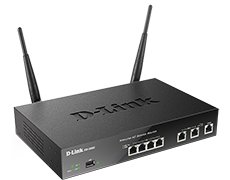
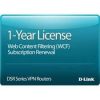
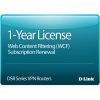
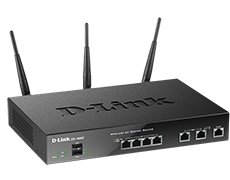
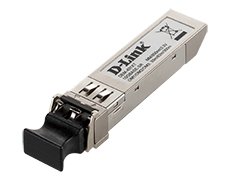
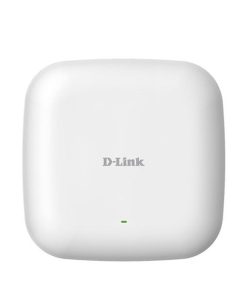
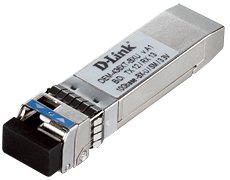

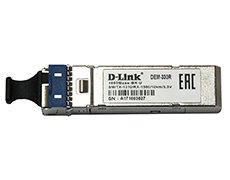
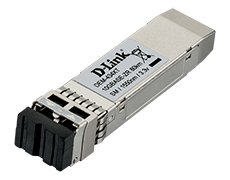
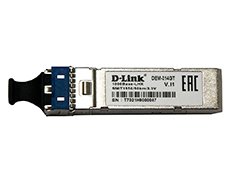

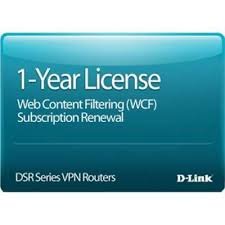


Đánh giá D-LINK DSR-500AC
There are no reviews yet.